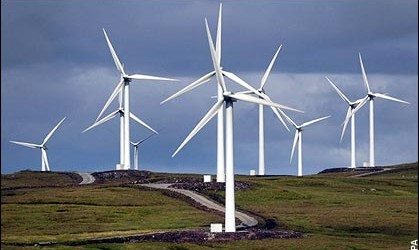Through June of 2012, renewable energy was right behind natural gas in terms of the most new energy generating capacity being installed in the United States, with wind making up most of the renewables push. And now Business Insider has flagged the numbers for the remainder of the year.
Last week, they reported that wind ultimately pulled ahead of natural gas to become the leading installer of new capacity in 2012, at 10,689 total megawatts.
Those numbers came from the Federal Energy Regulatory Commission’s report on the trends and highlights in U.S. energy for the past year. According to FERC’s update, natural gas installed 8,746 megawatts of new capacity, coal installed 4,510 new megawatts, and solar came in fourth with 1,476 new megawatts. Here’s the relevant table from the report, conveniently highlighted by Business Insider:

One thing to note here is the issue of capacity factor: That’s how much power an installation actually produces as a percentage of its theoretical capacity. (Which is what’s listed in the table.) Natural gas plants do quite well in this regard: Their median performance tends to come out to at least 80 percent, and they max out at 93 percent, according to the National Renewable Energy Laboratory’s cost database.
Unfortunately, wind power doesn’t perform as well, due to the intermittency of, well, wind. Its median tends to be around 40 percent offshore. Onshore it’s been at 30 percent, though arguably onshore performance is pulling alongside offshore. And both max out at 50 to 54 percent. So even though wind beat out natural gas for new capacity in 2012, the new natural gas installation will almost certainly wind up generating more total electricity.
The good news for wind is that it’s still a relatively young technology, with lots of room to improve. The energy it does deliver is produced much more efficiently in comparison to natural gas — the former loses less than one percent of its energy as waste heat, while the latter can lose as much as 54 percent. Natural gas production in the U.S. may be on track to plateau, leading to predictions of rising prices, which will give wind power a further economic opening.
And, of course, there’s the fact that, while cleaner than coal, natural gas remains a contributor to greenhouse gas emissions both through leaks and combustion.
This article was originally posted on Climate Progress. Re-posted with permission.










